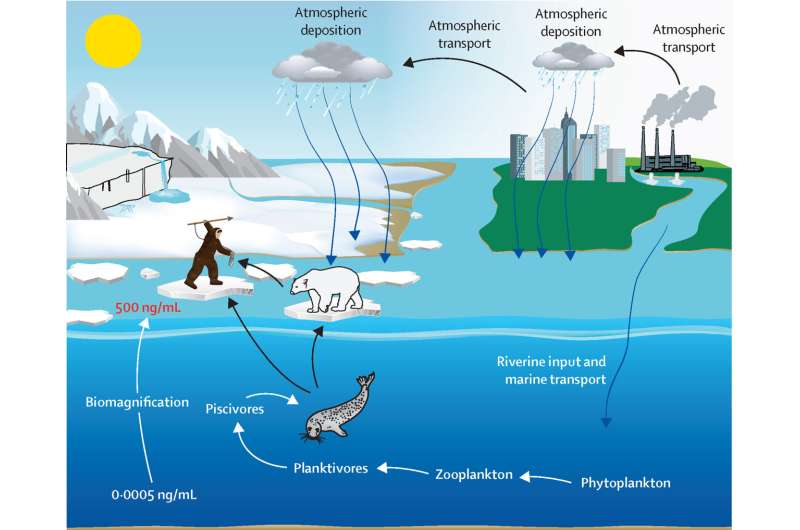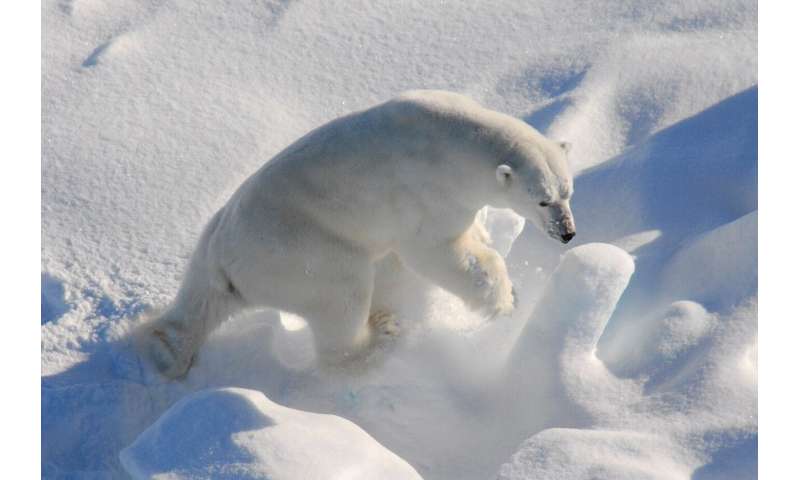This article has been reviewed according to Science X's editorial process and policies. Editors have highlighted the following attributes while ensuring the content's credibility:
fact-checked
peer-reviewed publication
trusted source
proofread
Alarmingly high PFAS levels found in the populations of Greenland, the Faroe Islands, Denmark and the UK

The hunting community in Ittoqqotoormiit (Scoresby Sound), Northeast Greenland, has some of the world's highest concentrations of PFAS in their blood, even though they live far away from sources of contamination with per- and polyfluoroalkyl substances (PFAS).
PFAS is used in almost all industries and is found in many products such as textiles, carpets, shoes, food packaging, cosmetics, fire foam and pesticides.
The substances are long-range transported to the Arctic via the atmosphere and ocean currents. When they are released to the environment, PFAS is bio-magnified through the food chain. Predators at top of the food chain, such as ringed seals, toothed whales and polar bears therefore contain high PFAS concentrations, and the high levels in the indigenous population of East Greenland are hence primarily originating from their food.
The study, which has just been published in the journal Lancet Planetary Health, shows that 92% of residents in Ittoqqortoormiit have far more PFAS in the body than the European Food Safety Authority (EFSA) recommends to avoid damage to the immune system.
In addition, 86% of the inhabitants have blood values that are higher than EFSA's threshold value for serious risk of damage to the immune system.
A global problem
The recently published study shows that the pollution with PFAS is critical in many parts of the world, and Christian Sonne emphasizes that national and regional legislation must go hand in hand with the UN's sustainable development goals and the Stockholm Convention in order to phase out PFAS.
-

Polar bears and seals are still an important food source in hunting communities in Greenland. Credit: Rune Dietz -

Meat from polar bears is one of the greatest sources of PFAS exposure in the hunting community Ittoqoortoormiit (Scoresby Sound) in Northeast Greenland. Credit: Rune Dietz
"If measures are not taken quickly, such as a ban on PFAS and the use of alternatives to PFAS, pollution of the environment will continue to threaten public health around the world," says professor Christian Sonne.
On 7 February 2023, the European Chemicals Agency published a proposal to limit the production, use and marketing of more than 10,000 PFAS substances in the EU. The purpose of the proposal is to limit the spread of PFAS substances. As a rule, the use of PFAS will be banned in general in EU, but unfortunately not in various pesticides. Similar actions are under way in the U.S.
The researchers behind the study show that PFAS levels in the blood are generally higher in the European countries and North America compared to countries in Asia and Africa. The highest concentrations are found (in descending order) in Greenland, the Faroe Islands, Denmark, Australia, Sweden, Norway, Malaysia, U.S., Taiwan, Greece, Poland, Spain and Iceland.
More information: Christian Sonne et al, Assessment of exposure to perfluorinated industrial substances and risk of immune suppression in Greenland and its global context: a mixed-methods study, The Lancet Planetary Health (2023). DOI: 10.1016/S2542-5196(23)00106-7
Journal information: The Lancet Planetary Health
Provided by Aarhus University





















